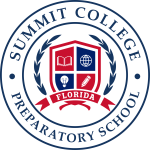Geometry: Logical Reasoning and Spatial Structures
High School Geometry Course for Visual and Deductive Thinking
Grade 9–10 · 1.0 Credit · English Instruction
Geometry: Logical Reasoning and Spatial Structures helps students build their abilities to visualize shapes, explore spatial patterns, and construct mathematical proofs. Moreover, the course strengthens logical thinking by introducing core geometric ideas, constructions, and transformations.
Grade Level: 9–10
Credits: 1
Delivery Format: Live Online (1:1 or Small Group)
Duration: Full Academic Year (194 instructional days)
Instructional Language: English
Geometry: Logical Reasoning and Spatial Structures teaches students how to use geometric reasoning and solve problems with confidence. They learn how to write clear proofs, examine relationships among shapes, and explore congruence and similarity through hands-on activities and guided lessons.
Key topics include angle relationships, triangles, the Pythagorean Theorem, quadrilaterals, circles, coordinate geometry, and spatial reasoning in three dimensions. In addition, tools such as compasses, rulers, and graphing software help students explore and measure accurately.
Because the course follows a logical sequence, students steadily build on what they learn. They apply geometric theorems to both theoretical questions and real-life situations. To reinforce understanding, each lesson includes visual and interactive tasks that build spatial awareness.
Aligned with national academic standards, the course prepares students for future coursework such as Algebra 2 and Precalculus. It also strengthens thinking skills used in science, architecture, and engineering.
Ultimately, students who complete the course will be able to solve geometric problems, recognize patterns, and present their ideas clearly and logically.
Core Academic Content
Properties of angles, lines, and planes
Triangle congruence and similarity
Proofs and theorems
Transformations and symmetry
Coordinate and solid geometry
Instructional Framework
Guided proof-building strategies
Hands-on tools and visual technology
Real-world problem applications
Adaptable pacing for different learners
Key Academic Competencies
Clear logical thinking
Strong visual and spatial skills
Accurate use of math vocabulary
Problem-solving in 2D and 3D settings
Linking geometric and algebraic thinking
Mathematical Tools and Texts
Approved course textbook
Compass, ruler, and protractor
Interactive geometry software
Skill-building worksheets and exercises
Assessment Structure
Quick quizzes on key ideas
Drawing and construction tasks
Proof-based writing assignments
Multi-topic math and design projects
Final test with spatial and logic challenges
